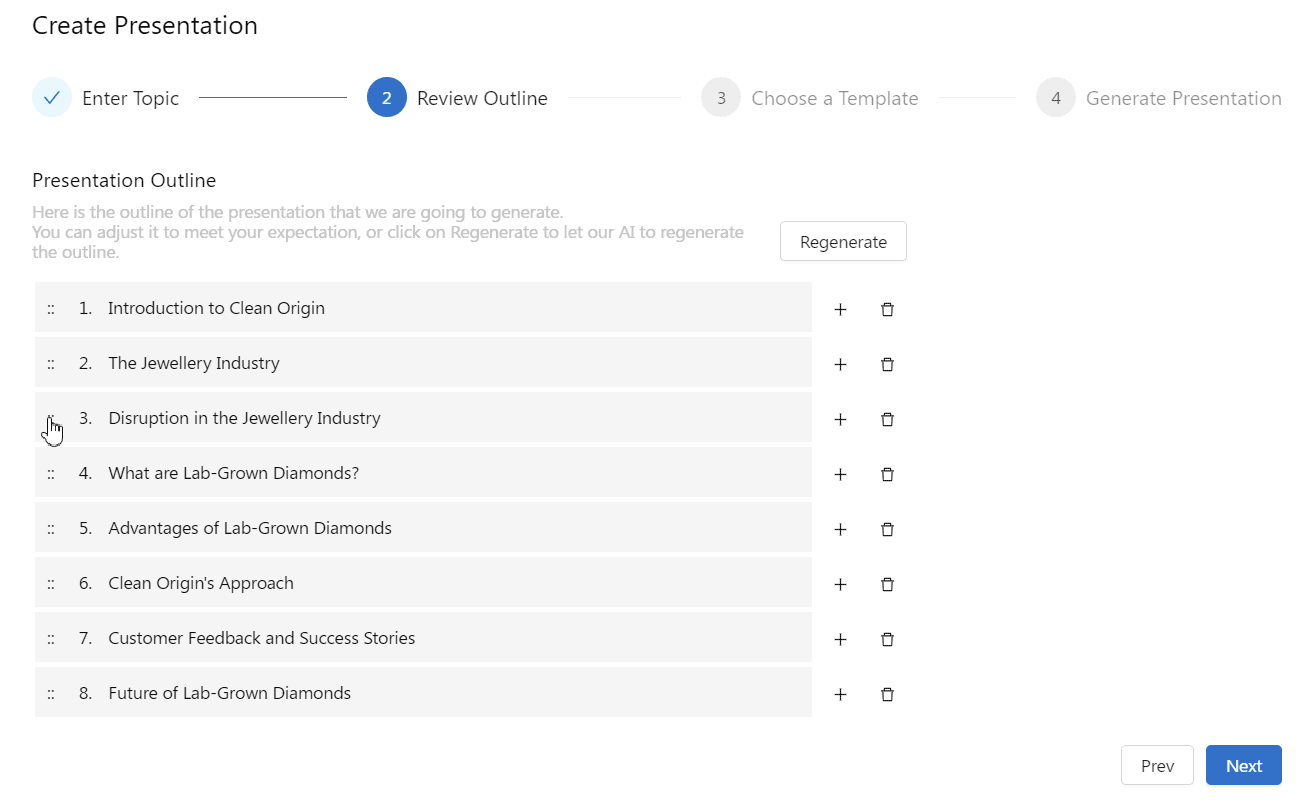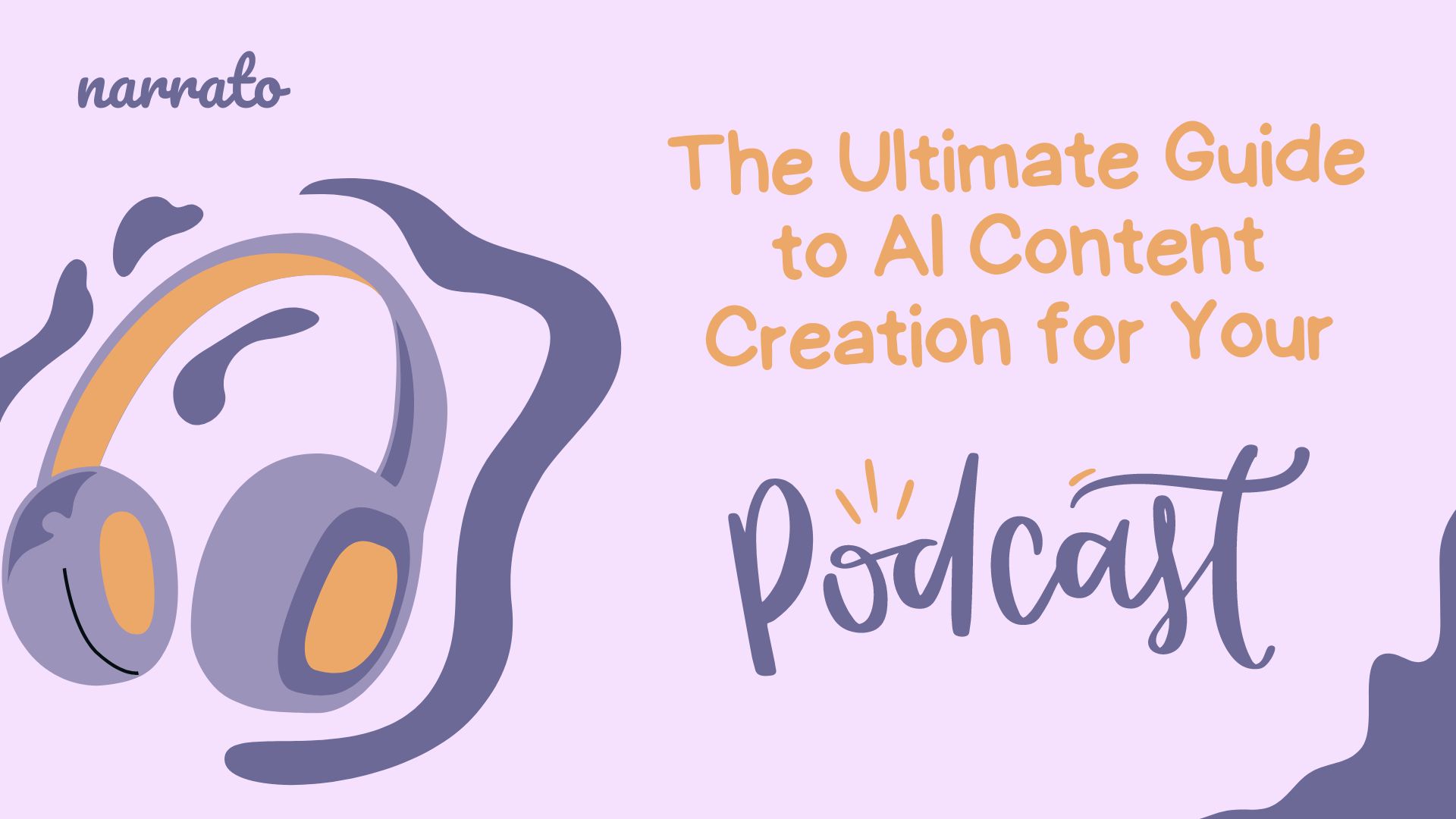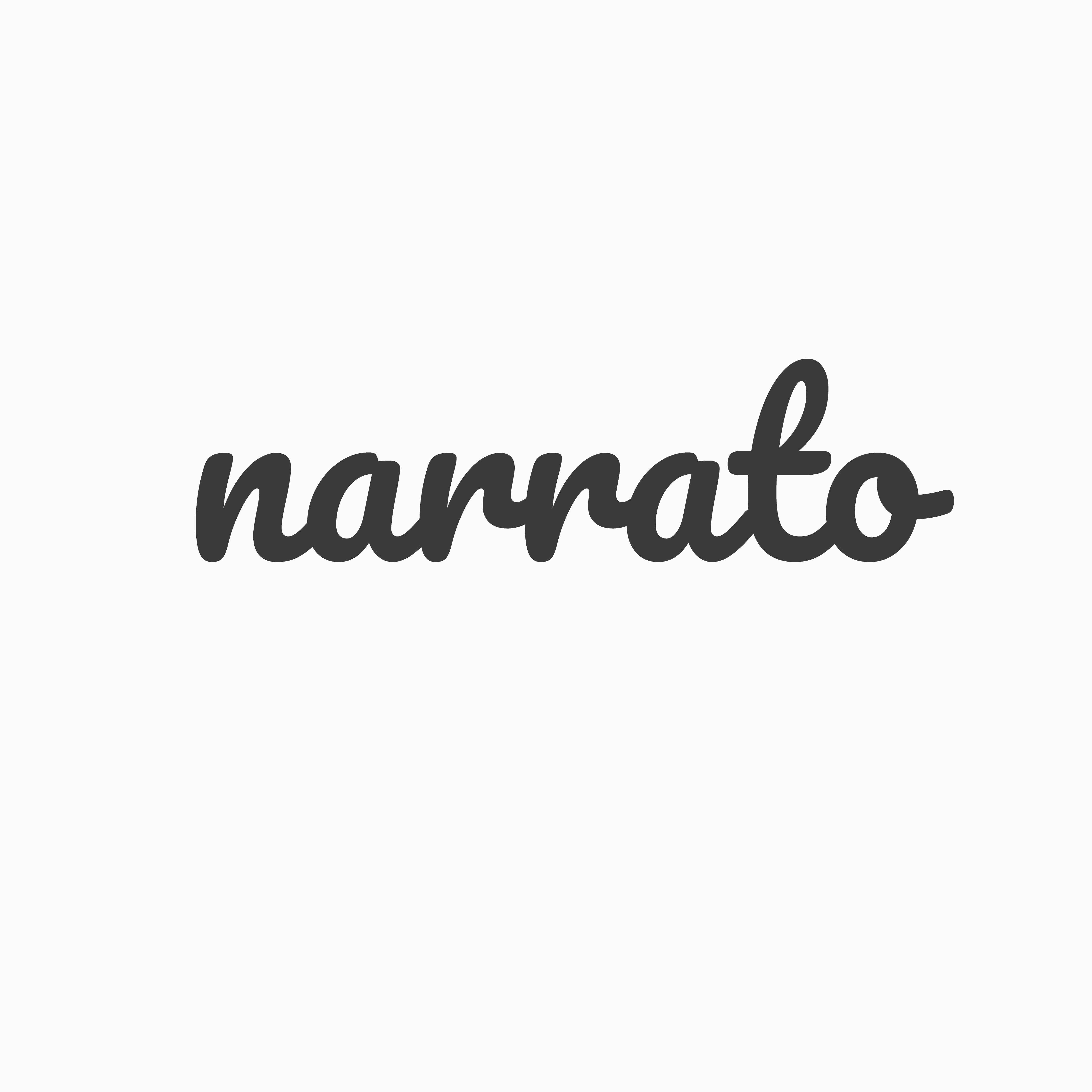In recent years, artificial intelligence (AI) has revolutionized content marketing and creation, offering tools that simplify complex processes and enhance creativity.
For podcasters, AI’s impact is significant.
In this blog, we’ll explore how AI-powered tools assist in planning, scripting, and producing engaging podcast content. We’ll also highlight practical applications and tools that help content creators elevate their podcasting game.
Finally, we’ll dive into AI’s role in each stage of podcast creation, ensuring both seasoned and novice podcasters can harness AI’s potential to transform their content and connect more effectively with their audience.
Step 1: Unlock engaging content ideas with proper research
Step 2: Streamline the script-writing process
Step 3: Produce a high-quality podcast
Step 4: Podcast post-production and promotion
Challenges of using AI for podcasts

Step 1: Unlock engaging content ideas with proper research
Here’s the deal when it comes to podcasting: your topic is the hook. If it doesn’t spark interest, listeners simply won’t tune in. A B2B podcast company can utilize AI-driven research tools to identify trending industry topics, ensuring content resonates with target business audiences. That’s why zeroing in on what your audience is eager to hear about is crucial.
Thankfully, you no longer have to spend hours (or days) scouring the internet for worthy topics to discuss. AI tools are invaluable allies in this quest. They can sift through mountains of data, helping you pinpoint and shape a narrative that truly engages your listeners.
Consider Wiz as a case in point. Known for revolutionizing cloud security such as CWPP, CNAPP and so on, they offer insights into securing cloud environments, appealing to a broad spectrum of listeners interested in technology and cybersecurity. Imagine harnessing AI to help develop the wealth of knowledge in Wiz’s resources. This powerful tech can help you tease out key topics and questions, discussion points, and potent explanations.

Writing prompts for ChatGPT can provide you with ideas to start with. Another option could be an AI-writing tool like Narrato. These tools are perfect for helping you brainstorm and expand on ideas so you can create content tailored to your audience.
Use tools like AnswerThePublic to discover real questions your audience is asking. Going back to our Wiz example, their target audience might ask questions about foundational cloud security, such as “What is agentless scanning?” These are real questions people search online. Including them in your podcast will not only help you satisfy your listeners but also improve your SEO optimization and voice search. It’s a win-win.
You can craft episodes that speak directly to your listeners’ interests, providing clear and insightful answers to the questions they care about most.
This step may seem obvious. But it sets you up for success. Trust us, it’s worth it.
Step 2: Streamline the script-writing process
AI software like OpenAI’s GPT-4 can produce creative and coherent scripts based on input themes or keywords. Simply provide a topic or a plot outline, and the AI generates relevant script suggestions, complete with dialogue and character interactions. Sounds idyllic, right?
These tools can also adapt to different styles or tones, whether the podcast is informative, comedic, or dramatic.
Looking for different variations on a theme? AI helps here, too. You can explore different angles on a subject at the click of a button. This capability speeds up the scripting process and enhances the creative potential of podcast episodes, allowing for diverse and engaging content.
You can use Narrato’s AI video script generator for this. Though this AI template is designed for generating YouTube video scripts primarily, it can also do a great job at giving you a first draft for your podcasts. Just enter the topic, pick your tone, and set the length and number of hosts for the video.
Here’s an example – a script for a 1-minute podcast clip that we generated.

You can see how it gives you dialogs for both speakers in the podcast, along with scenes and editing instructions. How cool is that?
Remember, AI isn’t here to replace you as the content producer. However, the tech does speed up the planning and creation process to allow you to create future episodes in less time.
For example, when a company’s CEO talks about his brand in a podcast, it’s hard to use AI in any sense.
Take the case of Alexander Weindling, the Founder & CEO of Clean Origin, who talked about his brand’s importance and role in disrupting the jewelry industry with lab-grown diamonds in the podcast with 2x eCommerce.

He shared the details of founding the company, its origins, and its mission. Getting the AI to spit out a script for such a podcast episode is impossible.
However, AI can help create the outline, which can prompt CEOs to mention specific points that make the podcast engaging for their audience. Try using Narrato’s AI Chat for this. Simply enter your prompt and let the AI do the rest.

Alternatively, you can use SlideModel’s AI Presentation Maker to outline the structure of the Podcast presentation, to use it as a guide, but also to repurpose your content in a presentation format.

Example of Outline generated by SlideModel’s AI Presentation Maker
Step 3: Produce a high-quality podcast
AI can enhance audio file quality and add creative elements. AI algorithms effectively remove unwanted background noise and balance audio levels for podcast audio recordings. The goal? Sound clarity and consistency across episodes (regardless of how loud the podcast host and guests talk into their microphones when recording).
This feature is particularly valuable for home-based podcasters who may not have access to professional studios.
A few of the best AI-powered noise reduction/remover tools are:
- Krisp.ai
- Cleanvoice
- Podcastle
Each has its own pros and cons, but they all offer high-quality noise removal, free trials or free basic plans, and great user reviews.
Additionally, AI can suggest and generate fitting background tracks, effects, and soundscapes with the help of a sound wave generator, perfectly aligning with the podcast’s theme and mood.
Such AI applications are transformative, enabling podcasters to produce high-quality, outstanding audio content that stands above the rest.
Step 4: Podcast post-production and promotion
AI-powered voice-to-text services can rapidly convert entire podcast episodes into accurate text. Text is an invaluable feature for creating detailed show notes and blog posts, enhancing accessibility for those who are deaf or hard of hearing.
Text is an invaluable feature for creating detailed show notes and blog posts, enhancing accessibility for those who are deaf or hard of hearing.

Some exceptional transcription tools are:
- Otter.ai
- Transcribeme
- Temi
AI excels in distilling episodes into concise summaries or key highlights. These summaries are crucial for promotional materials such as:
- Quick previews that entice new listeners
- Content for social media channels
By extracting the essence of an episode, AI allows podcasters to effectively communicate the value of their content in a few compelling sentences to hook an audience.
With short-form videos becoming increasingly popular, you can even use AI to transform long podcast video files into engaging Instagram Reels. How? By identifying and extracting key highlights and converting them into short, captivating video segments.
Podcast visuals
AI tools like DALL-E can generate unique logos, cover art, and promotional graphics tailored to your podcast’s theme and style.
For instance, a podcaster discussing historical events can use AI to create period-appropriate cover art, enhancing the thematic consistency between audio and visual elements.
Similarly, for promotional graphics, AI can quickly produce eye-catching and relevant images for use in social media posts, website banners, and advertisements, aligning visually with the podcast’s content.
This capability saves time and provides a professional and cohesive brand image across various platforms, making the podcast more visually appealing and recognizable to listeners.
Here’s an example of a podcast logo created using Narrato’s AI image generator.

The above was created using the following prompt:
Create a podcast logo in the style of a pop art poster. The podcast name is “The Best Podcast”
You can even select the art style and orientation to further personalize the images.
Looking for more prompts? To inspire you, we’ve put together the best 40+ Prompts for Image Generation that will surely help. You may also be interested in our list of 100+ ChatGPT prompts for content creation.

Challenges of using AI for podcasts
Now that you know the advantages, let’s focus on some challenges you need to be aware of when using AI to produce your podcasts.
Lack of authenticity
One of the biggest challenges is maintaining the authenticity and human touch listeners value in podcasts. AI-generated content can sometimes come across as robotic or lacking the nuances of human communication.
Lack of creativity and originality
Podcasts often require creativity and original ideas to stand out in a crowded field. AI may struggle to generate innovative content and rely on existing patterns and trends.
These challenges mean podcasters must use the human creative brain in the scripting process alongside AI for planning and making the podcast scripts.
There are quite a lot of topics that AI can’t analyze and require human expertise.
For example, Jeffrey M Solomon, the CEO of Cowen, discussed ways of democratizing access to health care in his podcast series.

There’s no way that AI could replace his professional experience and analysis in this regard.
He discussed the importance of telehealth brands such as Hims & Hers and their approaches to mental health, sexual health issues, and other common health conditions.
Such products always interest listeners because they give them real information, recommendations, and reliable sources to follow.
Wrapping up
Powerful features of AI-powered tools include:
- Flesh out sound quality and visuals and reduce background noises
- Streamline the research and scripting process
- Make it accessible to people with disabilities
- Create compelling promotional content
Challenges of AI in podcast creation include:
- A lack of authenticity, creativity, and originality
Using AI gives you a headstart. You shouldn’t solely rely on it to produce the finished piece, whether scripting, writing social media posts, or creating visuals.
Humans will always need to put the finishing touches on any AI output to ensure quality — for now, at least.
However, AI allows podcast creators who are enthusiastic about podcasts to get started — even if they’re novices or on a limited budget. How will you use AI in your podcast workflows?

Author Bio:

Jeremy is co-founder & CEO at uSERP, a digital PR and SEO agency working with brands like Monday, ActiveCampaign, Hotjar, and more. He also buys and builds SaaS companies like Wordable.io and writes for publications like Entrepreneur and Search Engine Journal.




